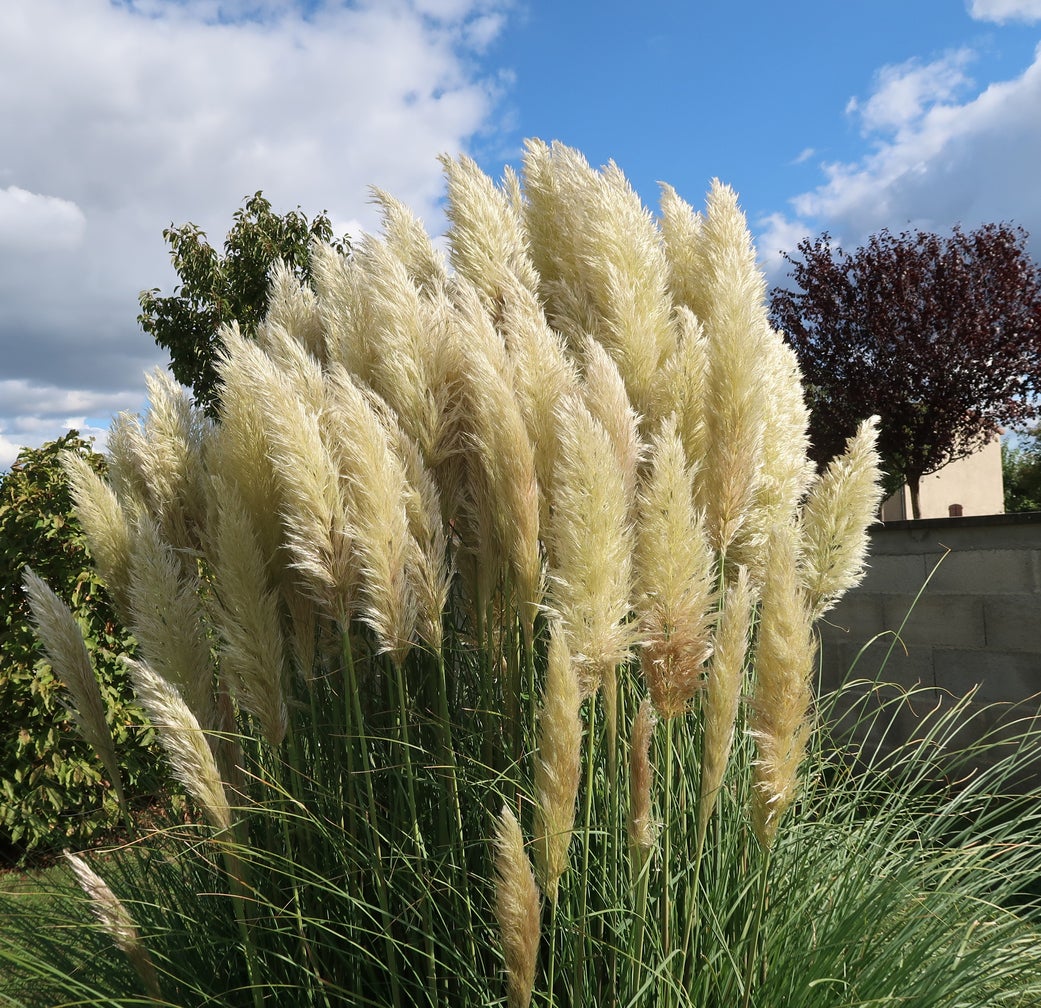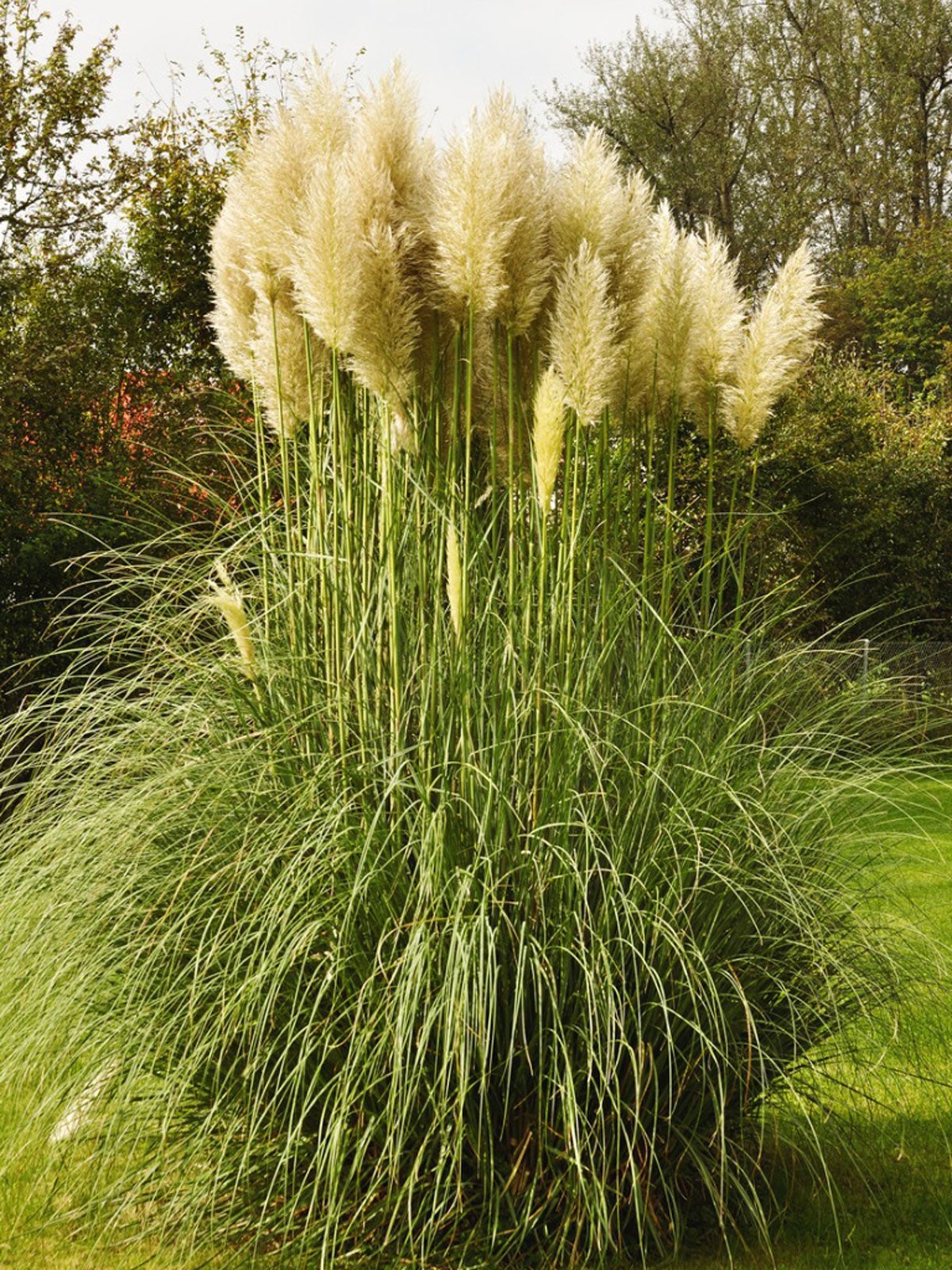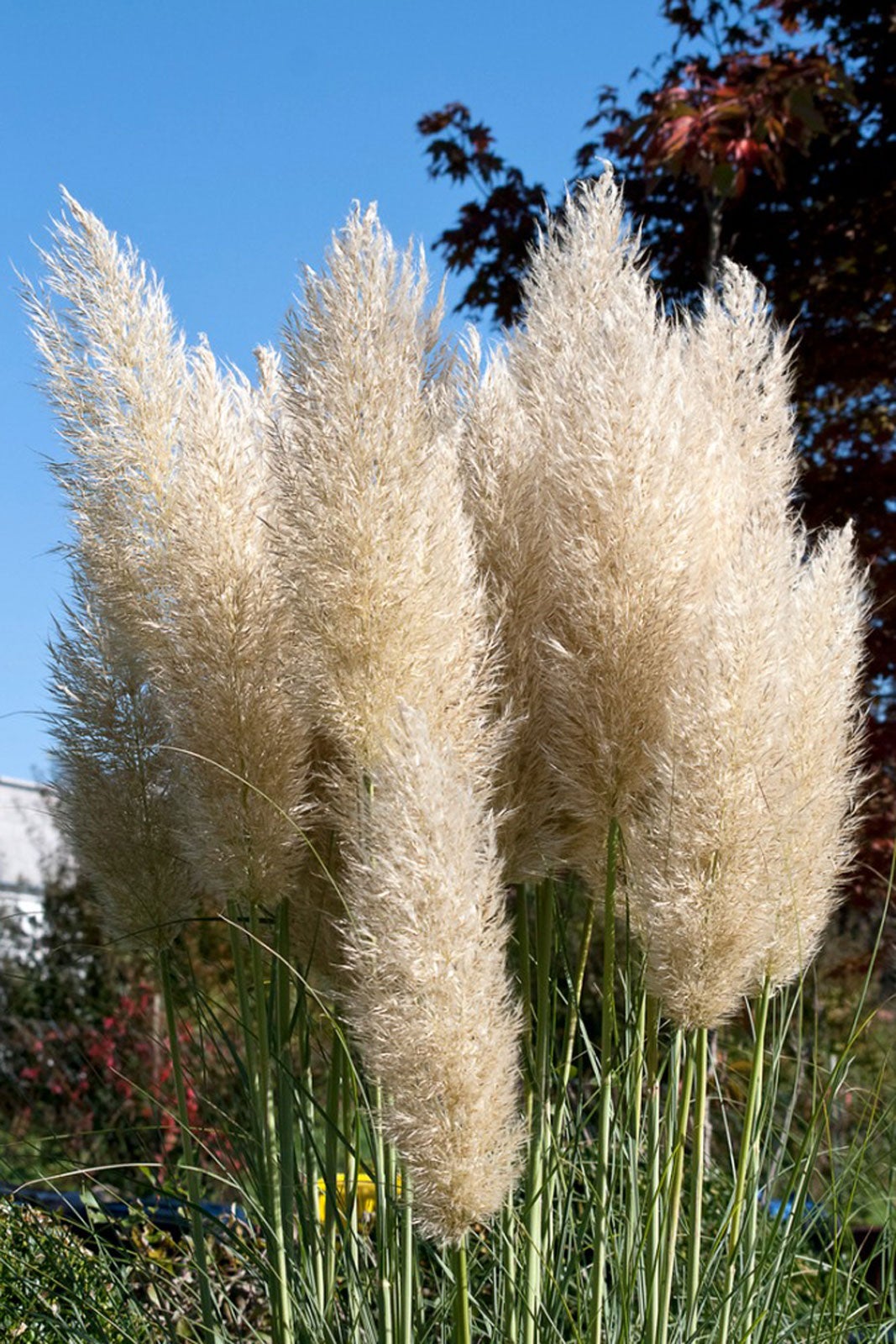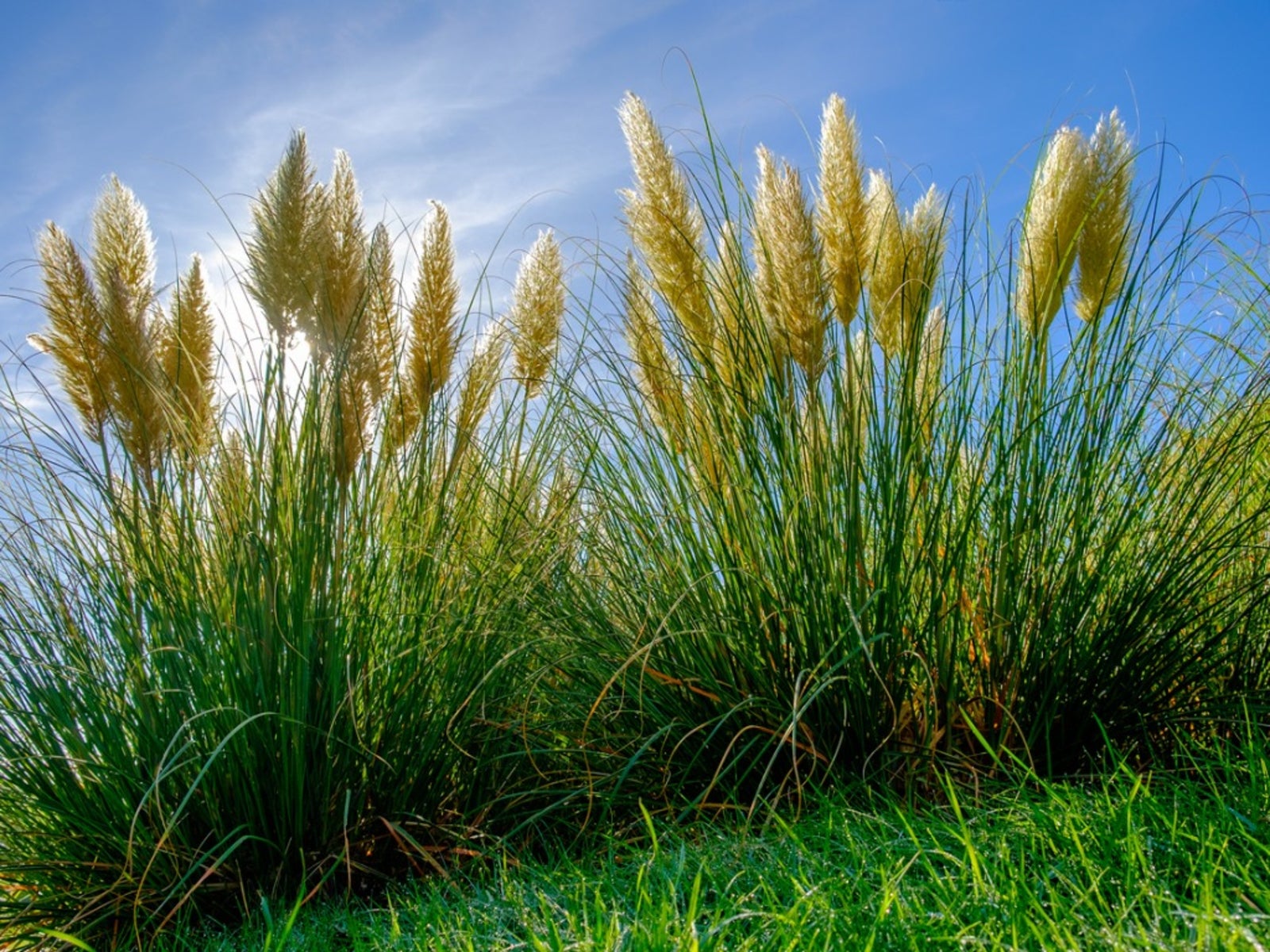Pruning Pampas Grass: When And How To Prune Pampas Grass Plants


Few plants make as bold a statement in the landscape as pampas grass. These showy plants require little care except for the annual pruning, which isn't a job for the faint of heart. Find out about pruning pampas grass in this article.
How to Prune Pampas Grass
Pampas grass needs annual pruning to get rid of the old foliage and make room for new growth. The foliage is tough and razor sharp. You'll need to wear leather gloves, long pants and a long sleeve shirt to avoid getting cut.
Pampas grass pruning is much easier when you have proper tools for the job. Hedge pruners and electric shears aren't up to the task. The best tool for the job is a chainsaw. If you're like me, a smallish person who is intimidated by a chainsaw, you can use long-handled loppers.
The long handles on loppers provide more leverage than short handled tools and make the job of cutting pampas grass plants easier, but even so, you can expect sore muscles and a few blisters the next day.
Before you begin, you might want to use a long stick to poke around the base of the plant and make sure there isn't anything unexpected inside. Small mammals often use the cover of pampas grass foliage as a winter nesting site. Once you're sure the grass is free of critters, you're ready to begin.
Cut through the leaves near the base of the plant to leave a tuft of foliage 6 to 8 inches (15 to 20 cm.) tall. You may have seen people burning off the remaining stubs, but you'll get healthier and stronger regrowth if you leave it alone.
After pruning, broadcast a handful or two of 8-8-8 or 10-10-10 fertilizer around the plant.
Gardening tips, videos, info and more delivered right to your inbox!
Sign up for the Gardening Know How newsletter today and receive a free copy of our e-book "How to Grow Delicious Tomatoes".
When to Cut Back Pampas Grass
The best time to cut back pampas grass is in late winter just before the plant begins sending up new foliage. Waiting until the end of winter allows you to enjoy the plumes all year. Every once in a while, clumps of pampas grass form smaller clumps off to the side. Remove these clumps when you do your annual pruning to prevent overcrowding and to preserve the shape of the clump. Thin the clump every three years or so.
This is a big job. Separating the roots requires the use of a heavy duty saw or an axe. Dig up and remove about one-third of the foliage.

Jackie Carroll has written over 500 articles for Gardening Know How on a wide range of topics.
-
 Looking For Plants To Give You The Soft And Fuzzies? Try These 5 Fuzzy Leaf Plant Options
Looking For Plants To Give You The Soft And Fuzzies? Try These 5 Fuzzy Leaf Plant OptionsLovers of texture, drama, silver foliage and tactile plants will adore these special sensory garden additions. These fuzzy leaf plant options will leave you all aglow
By Susan Albert
-
 Get Ready For A Summer Of Hummers! Grow These Full Sun Hummingbird Plants and Flowers
Get Ready For A Summer Of Hummers! Grow These Full Sun Hummingbird Plants and FlowersIf you’re lucky enough to enjoy a sunny backyard, make sure you are maxing out on your pollinator opportunities and grow these full sun hummingbird plants and flowers
By Tonya Barnett
-
 Moving Pampas Grass: When Should I Transplant Pampas Grass Plants
Moving Pampas Grass: When Should I Transplant Pampas Grass PlantsPampas grass is a stunning addition to the landscape, forming mounds of around 10 feet (3 m.) in diameter. With its quick growth habit, it is easy to understand why many growers ask, “Should I transplant pampas grass?”. Click this article to learn more.
By Tonya Barnett
-
 Potted Pampas Grass Care: How To Grow Pampas Grass In Containers
Potted Pampas Grass Care: How To Grow Pampas Grass In ContainersThe huge, elegant pampas grass makes a statement in the garden, but can you grow pampas grass in pots? These grasses can get over ten feet (3 m.) tall, which means you need plenty of room. Click here for tips on how to grow pampas grass in containers.
By Bonnie L. Grant
-
 Remove Pampas Grass: Tips For Pampas Grass Control And Removal
Remove Pampas Grass: Tips For Pampas Grass Control And RemovalPampas grass can grow quite large, and because if this and its size and numerous seeds, some people find pampas grass control a concern. This article explains what kills pampas grass if you need help with control.
By Susan Patterson
-
 Pampas Grass Care - How To Grow Pampas Grass
Pampas Grass Care - How To Grow Pampas GrassWhile they?re extremely easy to grow, it?s important to know what you?re getting into before planting pampas grass around the home. Don?t be so quick to plant it simply because it looks good. Find out why here.
By Nikki Tilley